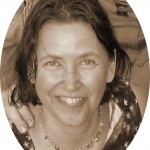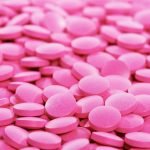Nature Cure Clinical Pearls: The Neutral Bath
Sussanna Czeranko, ND, BBE
In the United States the neutral bath is rather new. Most people have never even heard of it.
M. Ferrin, 1923, p. 317
The neutral bath is more efficient than all the agents known to pharmacy.
W. L. McKie, 1917, p. 44
In insomnia there is practically no single measure of treatment so valuable as the neutral bath.
J. H. Kellogg, 1903, p. 553
In days of old, there was one treatment that stood out above all others and without any contest as an infallible treatment for insomnia. The early NDs revered the neutral bath as one of the most effective means of instilling calm and sedation. They may not have agreed about what temperature constituted a neutral bath, nor did they achieve consensus on its duration; however, the literature confirms that our early NDs considered the neutral bath to be powerful and its reach wide, especially as the most efficient soporiferous treatment (Lust, 1924, p. 37; Kellogg, 1903, p. 553).
The temperature of the bath was neither too warm nor too cool but neutral, thereby avoiding “the exciting effects of both heat and cold” (Kellogg, 1903, p. 270). At these temperatures, the neutral bath was highly effective in “recuperating the nerves,” assuring their being energized. The neutral bath was invariably the answer for conditions that needed calming and sedation.
It is useful to note that—despite our perhaps feeling that we lead far more stressful lives today—a century or so after the neutral bath enjoyed so much acclaim among the early NDs, the literature of the period prevents us from discounting their understanding of the effects, immediate and long term, of stress on the body. The early 20th-century lexicon for stress was “sick” or “nerve exhaustion.” Benedict Lust described for us what stress or “nervousness” was like in the early 20th century:
[D]uring the period preceding the world war [World War I], the struggle becoming constantly more and more difficult for our material and ethical existence, also for a sufficient and adequate subsistence, has intensified the demands on our nerve-power to such an extent that a great number of people had become afflicted with nervousness. Then came the war, bringing millions of people unbearable suffering, devilish false propaganda, delusions, mental oppression and excitement, besides all kinds of physical exertions and hardships. (1923, p. 722)A good example of what seems in retrospect to constitute something of a preoccupation with nervousness among our early colleagues is an advertisement that appeared in a 1927 issue of Nature’s Path, a display ad for Richard Blackstone’s book New Nerves for Old. Blackstone’s explanation of why people suffered from nerve exhaustion is not far off from the experience of many today who suffer from stress due to “over active emotions, domestic turmoil, worries, intense concentration, excesses and vices” (1927, p. 40). The “nerves” of the early 20th century are easily recognized as the same stress and adrenal dysfunction that NDs diagnose and treat today. Useful to recall, though, is that in the early 20th century the endocrine system was still uncharted; even so, Blackstone attributed these nervous symptoms and pathologic conditions to the following observation: “[T]he mad pace at which we are traveling is wrecking the entire Nervous Organization” (1927, p. 40).
One of the symptoms of “the nerves” was insomnia. For those who were afflicted with sleeplessness, the neutral bath was at the top of the list for remedial interventions. The bath was taken at bedtime because of “the soporific power to a wonderful degree, inducing sleep even when hypnotics fail” (Kellogg, 1903, p. 395). Kellogg used the neutral bath for those who could not fall asleep and for those who woke up after 2 or 3 hours of sleep.
What constitutes a neutral temperature is quite relative. There is no absolute one temperature that is perceived by everyone as “neutral.” Each of us experiences warm, hot, cool, and cold in our own unique way. Neutral is defined as neither hot nor cold. What to one person may seem hot, another experiences as warm. The amount of body exposure to thermal stimulation also influences the sensory impression. For example, if the hand is immersed in 70°F water, the sensation is “cool” or even “cold”; however, if the whole body is immersed in the same temperature, the sensation is very cold. How much of a patient’s body is in the water, coupled with one’s own body thermostat, determines the relative temperature experienced (Abbott, 1914, pp. 37-38). Pope described the sensation of a neutral bath as follows: “[U]pon first entering the [neutral] bath there is a slight sensation of coolness, followed by a sense of comfort” (1909, p. 156).
Kellogg was skeptical of the precarious nature of a neutral bath, but used it in his practice. He commented:
A bath which is absolutely neutral is practically impossible, for the reason that a bath exactly at the temperature of the skin checks the elimination of heat, and hence occasions a rise of the body temperature, while a bath a few degrees below the temperature of the body excites the temperature sense, and thus gives rise to increased heat production and other reflex effects. (Kellogg, 1903, pp. 160-161)
It is important to note that, although we have become very fond of warm baths and may even have hot tubs that we soak in, the temperature differences among warm, tepid, and neutral were quite specific. One early hydrotherapist, Dr Abbott (1914, p. 38), established neutral water temperature ranges as varying from 94 to 97°F, while warm bath temperatures in his model ranged from 92 to 100°F. In this same continuum, tepid water temperatures ranged from 80 to 92°F, and a cool bath was between 70 and 80°F. The lower number of the temperature range would imply local or partial immersions, and the higher temperature would apply to full-body immersion (Abbott, 1914, p. 38).
The Physiological Actions
The neutral bath “produces no thermic reaction whatever, and in this respect occupies an unique niche in hydrotherapeutics. Its action upon the circulation is negative, although the pulse rate is moderately diminished . . . . Upon respiration and tissue change it is also negative” (Pope, 1909, p. 157). Abbott reported that the “neutral baths equalize or regulate blood pressure” (1914, p. 98). The temperature of the bath “exert[s] a relaxing effect and so equalize[s] the circulation as to reduce the amount of blood in the brain and the spinal cord” (Abbott, 1914, p. 437). Pope added, “[U]pon the brain and spinal cord the neutral bath is reflexly a sedative, quieting cerebral action and inducing drowsiness” (1909, p. 157).
How Warm Is Neutral?
What constituted a neutral bath was as unique as the practitioner. Kellogg ascribed neutral as “a bath at 92° F to 95° F [that] would produce little or no fall of temperature in a healthy person” (1903, p. 302). McKie believed that the neutral bath was “the only application which is always sedative at a temperature of 92° to 97°” (1917, p. 43). Dieffenbach described the neutral bath as the “indifferent full bath, 90° F–95° F,” which he advocated for insomnia (1909, pp. 47 and 238). Father Sebastian Kneipp (1901, p. 74), the stoic cold-water advocate, considered a bath from 90 to 95°F as warm. He also contended that at this temperature it could do no harm if taken no more than once a week; otherwise, weakness and debility were the consequence. As well, Friedrich Bilz (1898, p. 796), a devout follower of Kneipp, prescribed warm baths (95-100°F) to weak, debilitated people with insomnia.
While there were many opinions concerning the range of neutral temperatures, the consensus was that warm or neutral water applications had a relaxing response on the human body. The purpose of a neutral bath was primarily sedation. The bath was ideal for those who led sedentary lives with an undue degree of mental and nervous strain.
How Long?
The length of a neutral bath varied among those who used it. For the treatment of insomnia, Dieffenbach recommended “full baths given at the indifferent zone [90-95°F] for 20 to 30 minutes” (1909, p. 47). Abbott (1914, p. 437) prescribed neutral baths from 15 minutes to 3 or 4 hours but preferred them to be 20 to 30 minutes just before retiring. Eubanks, an ND practicing in Seattle, Wash., advised the following regimen for those suffering from sleeplessness: “[J]ust before retiring exercise the waist muscles and lower extremities mildly and follow with a warm [not scalding hot] bath” (1924, p. 747).
The Protracted Neutral Bath
For restlessness and sleeplessness, Biggs prescribed “the prolonged warm bath 94° F–98° F . . . from thirty minutes to two hours” (1916, p. 219). Bowers, a physician who published books on the subject of hydrotherapy, described the protracted neutral bath as lasting for hours and even days. He stated that “three hours sleep in the bath tub is easily equivalent to six hours of sleep in bed” (Bowers, 1917, p. 61). Ferrin, another physician who used the protracted neutral bath, indicated that it could be utilized “from three hours to three days” (1923, p. 317). He cautioned that the detoxifying effect of the long neutral bath was such that “many times the water turns perfectly yellow and brown during the fifth hour, and the odor is so offensive it is difficult for the attendant to stay in the bath room” (Ferrin, 1923, p. 318).
Another example of a protocol was that used by Dr Pope (1909, pp. 395-396) for insomnia. It involved the neutral bath at a temperature of 94°F for 40 minutes. Instructions were to commence the first night with a temperature of 96 to 98°F and a duration of 15 minutes, dropping the temperature 1°F nightly and increasing the duration 10 minutes until a temperature of 94°F and a duration of 40 and even 60 minutes are reached. Care should be taken that the hair does not become wet and that the patient, as far as possible, should remain quietly in the bath. Pope “frequently suggested the use of the neutral bath at bedtime to busy and overworked professional and business men who, while they are not really sick, still need some satisfactory hypnotic to produce physiological rest and sleep” (1909, p. 158).
Building on this approach, once the neutral bath was finished, Kellogg recommended that the patient with insomnia should be immediately wrapped in “Turkish sheets” or towels and carefully dried “by gentle patting of the sheets . . . without rubbing either the sheet or with the dry hand, being afterward placed in bed as quickly as possible, and his surroundings made in every way conducive to sleep” (1903, p. 553). Ferrin advised “a cold cloth on the forehead and rest for some time on the bed after [the patient] is dried off” (1923, p. 318).
More Factors for the Neutral Bath
Some early NDs suggested that even the time of year must be considered in choreographing the use of the neutral bath. For example, Kellogg (1903, p. 396) found that the best time for a warm bath in cold weather was just before retiring. Others agreed that the temperature of the room where the neutral bath was given should be warm (Abbott, 1914, p. 437). Abbott also would “wet the forehead and face in cool water” during the neutral bath (1914, p. 437). Once the bath was finished, to avoid countering the sedative effects, the patient was “promptly dried without friction” (Pope, 1909, p. 157).
Other Applications
Although there was no rival to the neutral bath for insomnia, other conditions were greatly ameliorated, such as “hysteria, extreme nervous agitation, insomnia from restlessness, etc” (Kellogg, 1903, p. 270). Bowers observed that prolonged warm baths were prescribed for “patients suffering with nervous irritability, insomnia, hysteria, nervous dyspepsia, functional irregularities peculiar to women, or any painful affliction—particularly if it be of an inflammatory nature, as neuritis, neuralgia or sciatica” (1917, p. 61).
Other nervous conditions that benefited from neutral bath therapy included those of the sequestered mentally ill:
Violent, dangerous maniacs, instead of being doped or straight-jacketed, as in the early bad old days, are now immersed in a nice warm bath of a uniform temperature—a “neutral” bath . . . and left there, with their heads supported on a strap saddle or a rubber pillow. Here they remain for hours, or even days, at a time, even sleeping and eating in the tub. This immersion in the warm water quiets and soothes them as nothing known to medicine has ever done, first by the direct action exerted upon the nervous system through the millions of nerve endings, and secondly by removing, through their skin glands, a highly poisonous depressant. (Bowers, 1917, pp. 60-61)
Kellogg also described the neutral bath for jaundice or icterus, which often manifested as intolerable pruritus for the patients. He explained that such patients would get relief from a sweating bath, followed by “a neutral bath for twenty or thirty minutes, at temperature of from 92° to 95° F” (Kellogg, 1903, p. 234).
Contraindications
There were very few contraindications to the neutral bath. These included “eczema and some other forms of skin disease [where] water aggravates the symptoms” (Kellogg, 1903, p. 556).
Today, we have become habituated to “hot water” and the “hot bath” such that our love of hot has skewed our perceptions. It may seem inconceivable for us today to classify a cool bath of 70 to 80°F as anything but freezing cold and the neutral bath even at body temperatures as simply uncomfortable. I was recently at a Mexican resort with a hot tub, and the temperature was about 96 to 98°F. Each evening, the hot tub was completely emptied of the North American tourists but was used by the local Mexicans. One visitor explained that the water was too cold.
In any case, despite that predilection for hot water, the neutral bath has value today as much as ever. In fact, there are numerous widely prevalent presenting conditions for which the neutral bath would be a valuable treatment. In terms of insomnia, for example, the neutral bath, as often recommended by the early nature cure physicians, would be as valuable a therapy today as then. The Institute of Medicine (2006) estimates that there are 50 to 70 million U.S. adults who have sleep or wakefulness disorders. Statistics Canada reported the following:
An estimated 3.3 million Canadians aged 15 or older, or about one in every seven, have problems going to sleep or staying asleep, and thus are considered to have insomnia, according to a new study in the latest edition of Health Reports. (Statistics Canada, 2005)
Many contemporary NDs know that this prevalence of sleeping disorders today translates into rising use of sleeping pills, despite the existence of this natural remedy for addressing the problem: “Prescriptions for sleeping medications topped 56 million in 2008—a record, according to the research firm IMS Health, up 54% from 2004” (Gellene, 2009). Imagine those 56 million prescriptions being replaced by 56 million neutral baths.
Sussanna Czeranko, ND, BBE is a faculty member working as the rare books curator at National College of Natural Medicine (Portland, Oregon). She is currently compiling several collections based on the journals published early in the last century by Benedict Lust. In addition to her work in balneotherapy, she is the founder of the Breathing Academy, a training institute for NDs to incorporate a scientific model of breathing therapy called Buteyko into their practice.
References
Abbott, G. K. (1914). Principles and practice of hydrotherapy for students and practitioners of medicine. Loma Linda, CA: The College Press.
Biggs, A. C. (1916). Rational treatment of neurasthenia. Herald of Health and Naturopath, 11(4), 217-219.
Bilz, F. E. (1898). The natural method of healing. New York: The International News Company.
Blackstone, R. (1927). Have you these symptoms of nerve exhaustion? Nature’s Path, 3(1), 40.
Bowers, E. F. (1917). Bathing for health: a simple way to physical fitness. New York: Edward J. Clode Publishing.
Dieffenbach, W. H. (1909). Hydrotherapy. New York: Rebman Company.
Eubanks, L. D. (1924). Treating sleeplessness. Naturopath and Herald of Health, 29(8), 747-749.
Ferrin, M. (1923). The wonderful value of the neutral bath. Naturopath. 28(7), 317-319.
Gellene, D. (2009). Sleeping pill use grows as economy keeps people up at night. Retrieved November 22, 2011, from http://articles.latimes.com/2009/mar/30/health/he-sleep30
Institute of Medicine. (2006). Sleep disorders and sleep deprivation: An unmet public health problem. Washington, DC: The National Academies Press.
Kellogg, J. H. (1903). Rational hydrotherapy. 2nd ed. Philadelphia: F. A. Davis Company Publishers.
Kneipp, S. (1901). The warm full bath. The Kneipp Water Cure Monthly, 2(3), 74-75.
Lust, B. (1923). Nervousness and neurasthenia. Naturopath and Herald of Health, 23(12), 721-726.
Lust, B. (1924). Nervousness and neurasthenia. Naturopath and Herald of Health, 29(1), 32-37.
McKie, W. L. (1917). Scientific hydrotherapy. Mokelumne Hill, CA: Health Research Publishing.
Pope, C. (1909). Practical hydrotherapy. Cincinnati: Cincinnati Medical Book Company.
Statistics Canada. (2005). Study: Insomnia. Retrieved November 16, 2005, from http://www.statcan.gc.ca/daily-quotidien/051116/dq051116a-eng.htm










